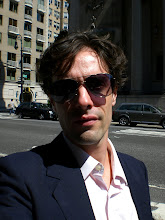
The team of BBC’s Oceans travels to the Southern Red Sea, an area of mostly uncharted territory, inhabited by a wide and colorful variety of species. First we sail to Djibouti to discover how oceans are formed as tectonic plates shift away from each other. Oceanographer Tooni Mahto and environmentalist Philippe Cousteau take us deep inside the rift between Africa and Arabia. As excited I am sure they must be, for me, all I can think is, so what? Not very spectacular viewing. Off the coast of Eritrea, maritime archaeologist Lucy Blue goes in search evidence of early human activity when our ancestors first went out of Africa across the globe. Around a raised coral reef she finds a flaked hand blade and other tools made from obsidian dating from the middle Paleolithic as well as oyster shells tossed together after a meal some hundred and twenty five thousand years ago.
We then discover that the coral reefs in the Red Sea are thriving despite the rising temperatures in what is already one of the warmest seas on Earth. They speculate that heat resistant algae are keeping the coral vibrantly healthy. Another extraordinary phenomenon is the florescent pigmentation of some corals which perhaps functions as a filter to screen out certain wavelengths of sunlight. From Eritrea we are taken to Sudan to explore the wreckage of the Umbria, an Italian cargo ship. At least we are offered a stirring bit of modern history. The captain deliberately sank the ship on the day Italy declared war on Britain so as to protect her secret cargo: not the thousands of wine bottles, not even the cars on board, but the five thousand five hundred and ten tons of explosives to be used against the Allies in World War II. Next, Philippe makes an emotional journey to the remains of an underwater village his grandfather Jacques Cousteau built in 1963. Actually only the submarine’s garage is all that is left. Finally expedition leader Paul Rose dives for sharks and finds gray reef sharks, barracudas, sail fish, silky shark, and on the last day of the voyage a school of about thirty hammerheads. A little disappointing they didn’t get any closer to show them in their natural glory.
We then discover that the coral reefs in the Red Sea are thriving despite the rising temperatures in what is already one of the warmest seas on Earth. They speculate that heat resistant algae are keeping the coral vibrantly healthy. Another extraordinary phenomenon is the florescent pigmentation of some corals which perhaps functions as a filter to screen out certain wavelengths of sunlight. From Eritrea we are taken to Sudan to explore the wreckage of the Umbria, an Italian cargo ship. At least we are offered a stirring bit of modern history. The captain deliberately sank the ship on the day Italy declared war on Britain so as to protect her secret cargo: not the thousands of wine bottles, not even the cars on board, but the five thousand five hundred and ten tons of explosives to be used against the Allies in World War II. Next, Philippe makes an emotional journey to the remains of an underwater village his grandfather Jacques Cousteau built in 1963. Actually only the submarine’s garage is all that is left. Finally expedition leader Paul Rose dives for sharks and finds gray reef sharks, barracudas, sail fish, silky shark, and on the last day of the voyage a school of about thirty hammerheads. A little disappointing they didn’t get any closer to show them in their natural glory.

No comments:
Post a Comment
Note: Only a member of this blog may post a comment.